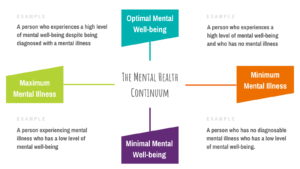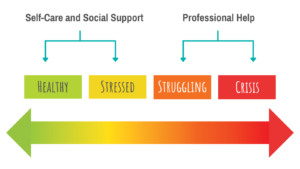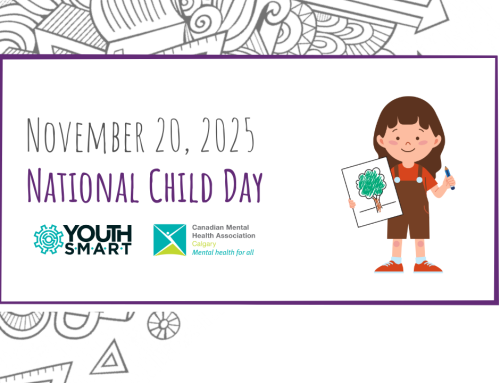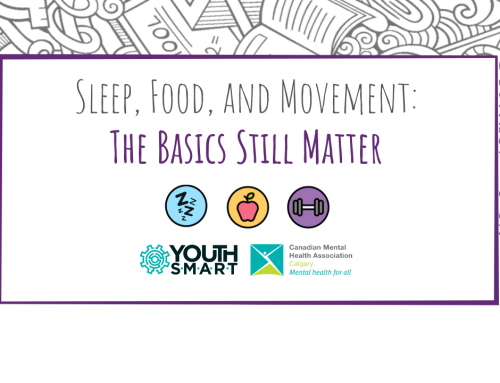Mental Health vs. Mental Illness
What is the difference?
Let’s first watch one of our YouthSMART: Fact or Fiction videos to find out if mental health and mental illness is the same thing.
Mental health and mental illness are closely related, but they are not the same thing.
What is mental health?
When someone is speaking about their mental health, they are referring to their overall mental well-being—emotions, thoughts, feelings, ways of understanding, coping with stressors (resiliency), etc.
We all work hard to keep our bodies healthy, but what about our minds?
Just like our physical health, it is important that we keep our mental health in check to prevent serious challenges down the road. Click here to read more about some great ways to keep your brain happy and mentally healthy!
What is mental illness?
Mental illness is a health challenge that affects the way we think about ourselves, relate to others and interact with the world. These disorders severely affect and impact how we conduct our thoughts, actions and behaviours on a day-to-day basis.
There is no single cause for mental illness however, you can identify different factors that explain why you are experiencing these challenges.
Although at times it may seem impossible to deal with, there are ways to cope and properly live with mental illness in a safe and effective way.
It’s also important to remember that mental health is not the absence of mental illness, and living with a mental illness does not mean you can’t achieve good mental health.
To understand the difference further, let’s break it down by looking at a spectrum.
Mental health and wellness can be better understood on a spectrum.
We all experience different types of stress, and it will naturally impact our moods.
We have days where we feel great and happy, and then something stressful will happen. Our moods can shift and we can suddenly feel irritated, angry, or sad. Sometimes our moods change, and we don’t even know why. It’s important to know that slight changes in mood are normal, and are often temporary.
This spectrum shows that we can shift from ‘green’ to ‘yellow’ quite often. We often find activities that can calm down ourselves or cheer ourselves up, like talking with friends or family, having alone time or just taking a break.
For some individuals, these changes in mood can be very drastic and can impact day-to-day functioning. These changes can be seen in the ‘orange’ or ‘red.’ These areas are harder to deal with on your own.
If you are finding it hard to calm down, cheer up, or find it difficult to understand your changes in mood, thinking or behaviour, it may be time to reach out for help.
Asking for help is not a sign of weakness.
We all deal with our emotions in different ways, and sometimes asking for help can allow you to talk to someone about how you’re feeling, which can make you feel better!
Experiencing these feelings can be very overwhelming and you may wonder if you will ever feel like yourself again. If this happens to you, focus on the present moment and take a deep breath.
Mental illness is not your fault.
If you know a friend, teammate, or you know that you’re struggling with your mental health, and don’t know where to turn to, here are a list of supports that are youth-centric and available for you to utilize.
You are not alone. There is help.
If you cannot find someone you trust who is willing to support you, dial a crisis line right away at 403-266-HELP (4357) All crisis lines are confidential.
YouthSMART would like to thank Sagium and Kinsted Wealth for being our 2020 – 2021 website sponsor.






